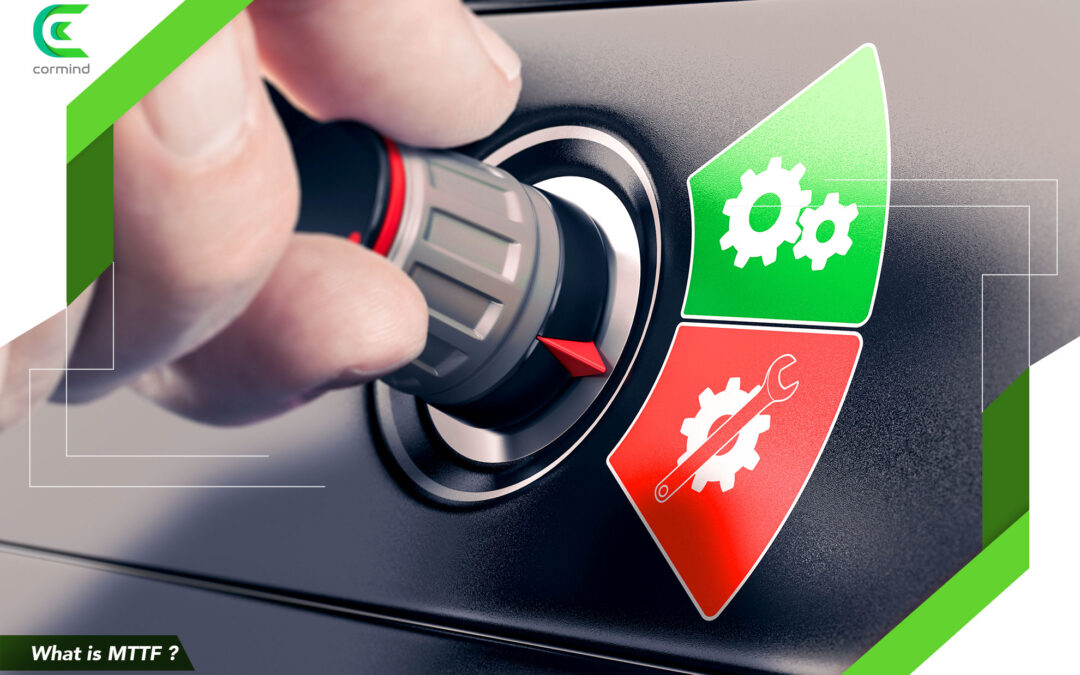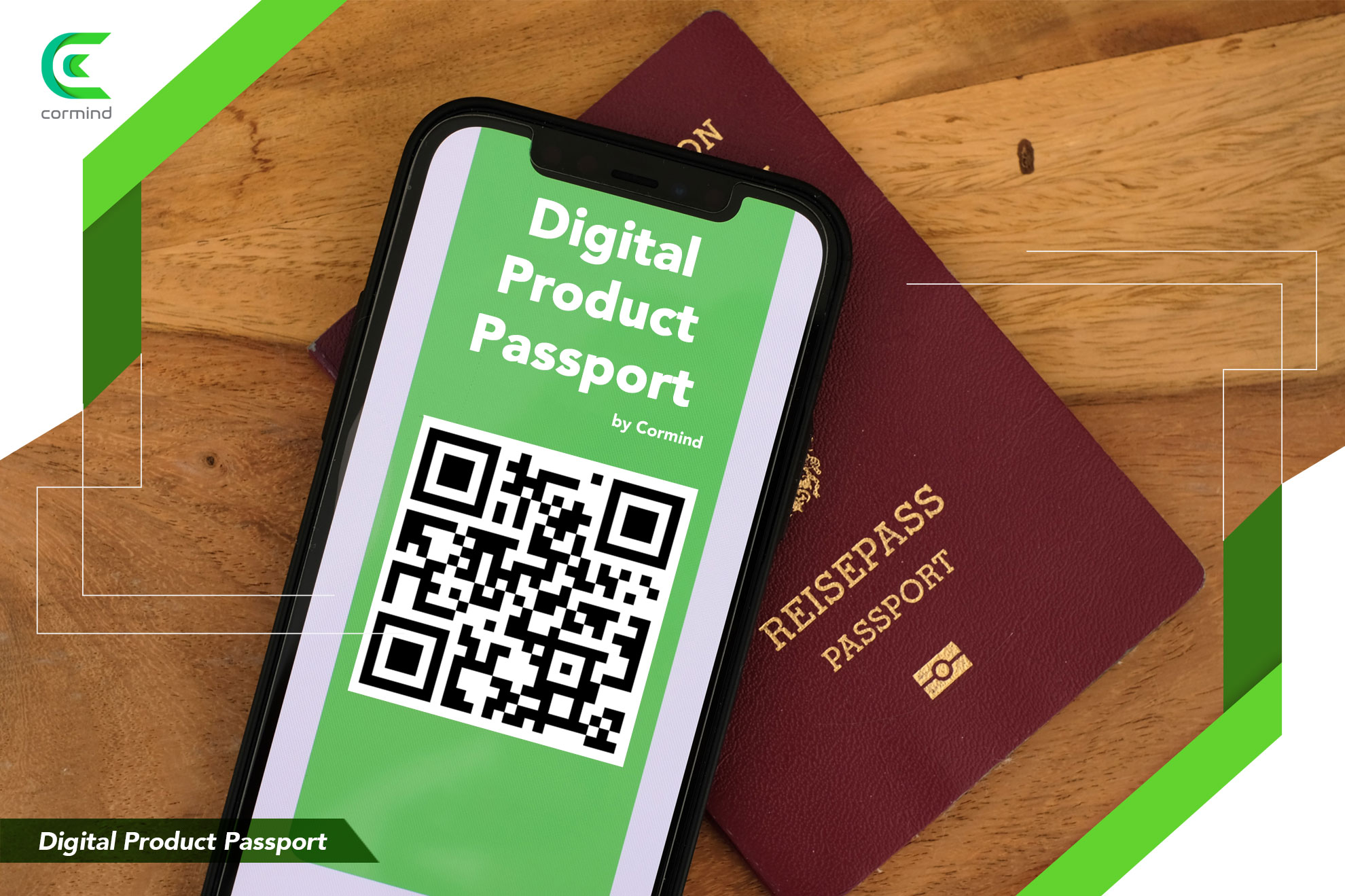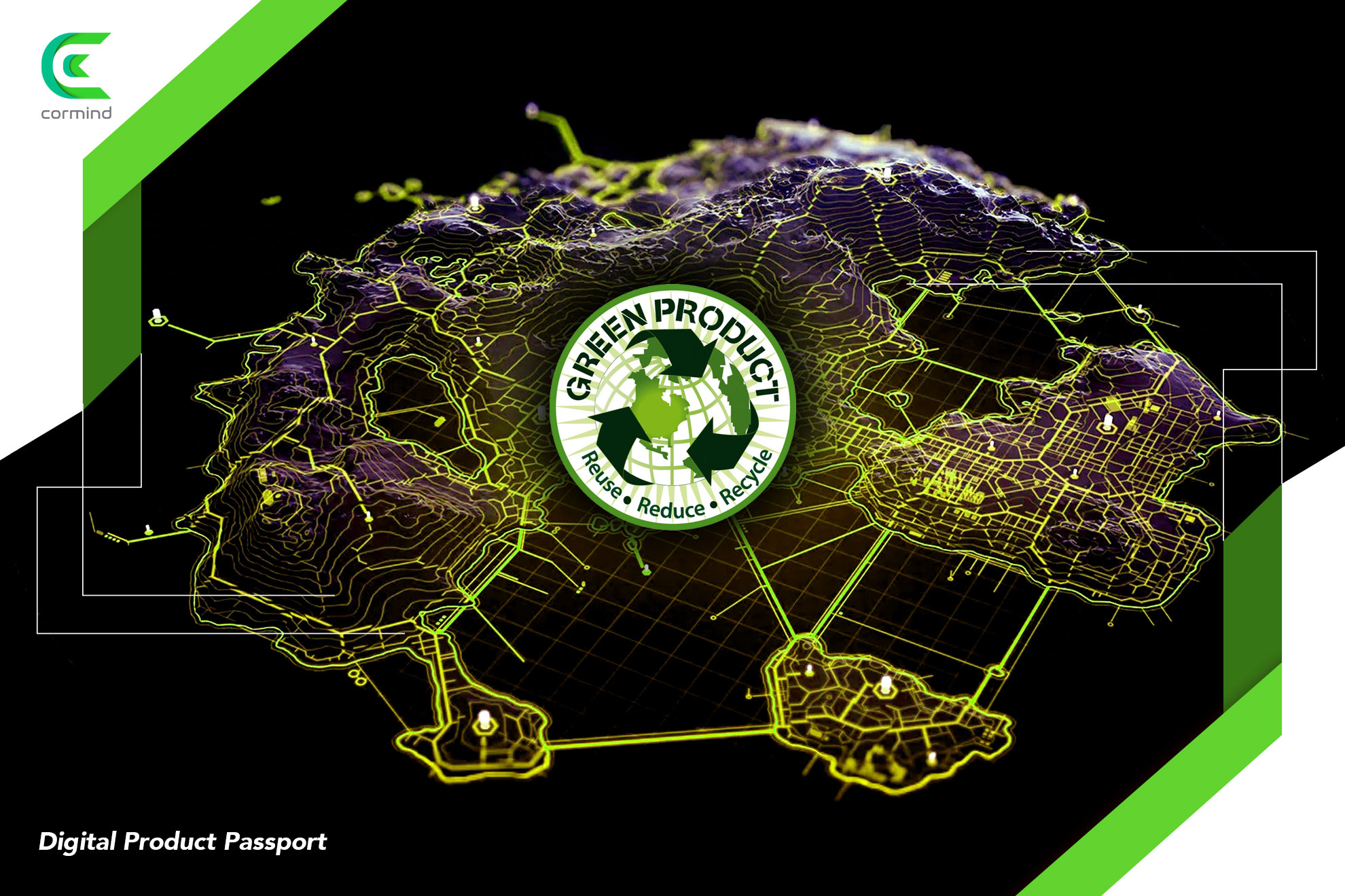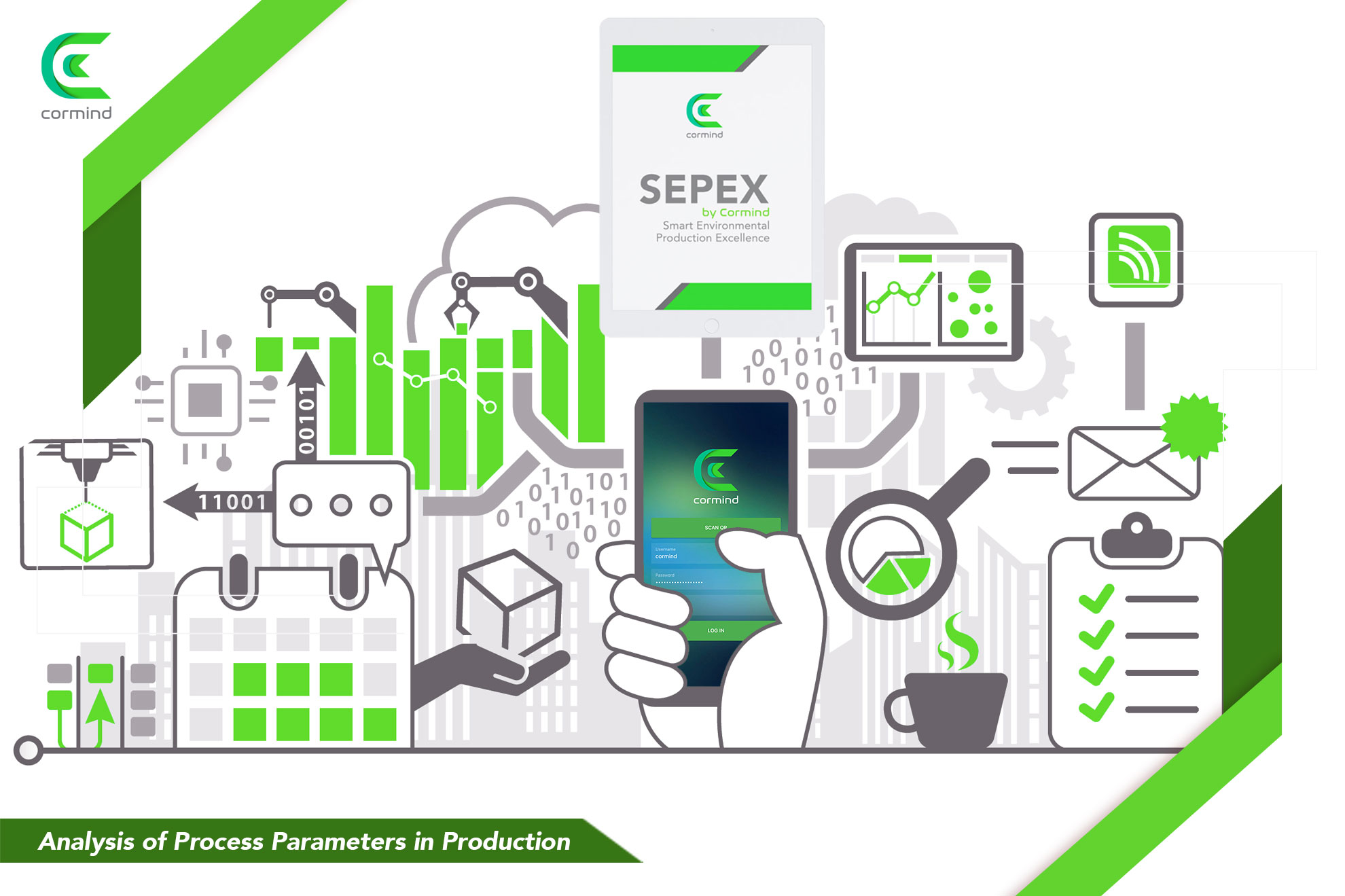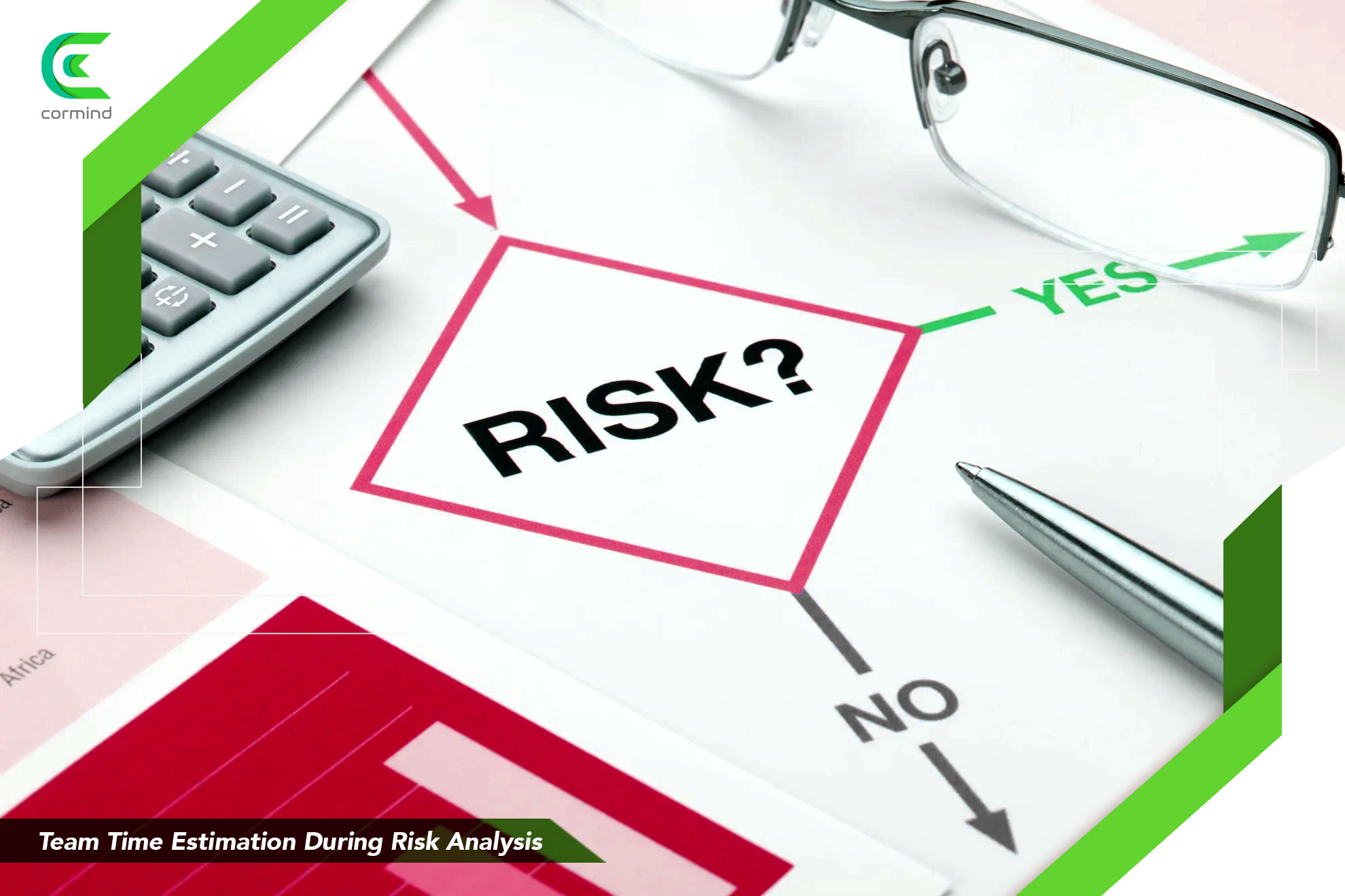
by Ercin Temel | May 9, 2025 | Blog
While artificial intelligence technologies are becoming smarter, more independent, and more effective every day, one of the most striking examples of this transformation is AI Agents. Unlike traditional automation systems, AI Agents not only react to specific commands, but also perceive their environment, analyze data, make decision,s and continue to learn by implementing these decisions. Especially in the manufacturing sector, autonomous structures offer great potential to reduce costs, optimize processes and shift the human factor to strategic areas.
What is an AI Agent?
AI Agents are autonomous artificial intelligence systems that collect data from their environment, analyze this data, make independent decisions, and implement the decisions they make. Unlike traditional software, they can follow specific rules and adapt, learn, and create new solutions according to the situation. Therefore, an AI Agent does not only follow predefined instructions. It can also take action on its own, considering the environmental variables.
Such systems usually include multi-layered structures such as sensors, data sources, machine learning algorithms, and decision-making mechanisms. The main goal of AI Agents is to solve a specific problem or manage a process without human intervention. For example, a customer service chatbot performs tasks such as understanding the user’s questions, pulling answers from the database, and providing different answers in the light of new information when necessary. All of these processes are directly related to the degree of independence of the AI Agent.
AI Agents offer significant advantages, especially in data-intensive industries. Their ability to recognize patterns, detect anomalies, and make predictions within large data stacks makes them an active solution partner. In this context, AI Agents are software technology and strategic actors that redefine human-machine collaboration.
Why are AI Agents Important?
The importance of these systems lies not only in their contribution to technological progress but also in their relief of the burden on human resources. In this way, they also contribute to strategic decision-making processes. With the ability to make data-driven decisions, AI Agents can outperform humans in terms of speed and accuracy.
One of the most significant contributions of AI Agents is that they enable companies to save time and resources by automating processes. In particular, repetitive tasks without human intervention make business processes more efficient and error-free.
In addition, AI Agents can analyze vast amounts of data instantly and provide real-time insights. This allows organizations to make faster, more consistent, and data-driven decisions.
AI agents also transform the customer experience by offering more personalized services. Thanks to chatbots, voice assistants, and recommendation systems, users’ needs can be met faster and more accurately, increasing customer satisfaction and competitive advantage.
Advanced AI Agent systems can also perform predictive analytics to identify potential problems in advance and offer preventive solutions against these problems.
Basic Components of AI Agents
For AI Agents to operate efficiently and independently, several key components must work together and harmoniously. These components allow an AI Agent to recognize its environment, make sense of the information it obtains from this environment, make appropriate decisions, and transform these decisions into concrete actions.
An AI Agent collects, evaluates, and acts on information like a human. But it does so much faster, more consistently, and often with a lower error rate.
Without these building blocks, it is not possible for an AI Agent to exhibit autonomous behavior:
Perception, Decision Making and Action
The most basic functioning cycle of AI Agents consists of sensing, decision-making, and action. Sensing refers to the system’s acquisition of information from the outside world. This information can be collected through cameras, microphones, sensors, or digital data streams.
The decision-making phase means the AI Agent analyzes the data it perceives and determines the most appropriate action. These analyses are usually performed using artificial intelligence algorithms and learning models. At this stage, the Agent can also consider its past experiences and similar situations it has encountered.
The final stage, taking action, involves implementing a specific action in accordance with the decision made. This could include responding to a user, making changes to a system, or performing an operation on a physical object.
Machine Learning and Deep Learning
This technology enables AI Agents to learn from historical data and respond more successfully to future situations. With machine learning, AI Agents can create their strategies by analyzing data while performing the tasks they are programmed for.
Deep learning takes this process one step further. Deep learning models can produce more sophisticated outputs by performing multi-layered analysis, especially in complex data structures (such as image processing and natural language understanding). This enables AI Agents to gain human-like perception and analysis capabilities.
Data Collection and Processing
Data is at the heart of every AI Agent. The success of systems depends on being fed with accurate, clean, and meaningful data. The data collection phase provides AI Agents with the necessary information to understand the events around them. This data can be obtained from sensors, user interactions, social media platforms, or various software systems. However, collecting data alone is not enough. This collected data needs to be processed, i.e., made meaningful. Making raw data analyzable is vital for AI agents to make effective decisions. Through the data processing process, the AI Agent eliminates unnecessary or erroneous data and processes only the correct information.
Usage Areas of AI Agents
AI Agents have become versatile technological assistants that touch almost every aspect of our lives. They play an essential role in facilitating the daily lives of individual users and making the processes of corporate enterprises more efficient. The usage areas of AI Agents are constantly expanding, and with the advancement of technology, these areas are becoming more diversified:
Voice Assistants
Voice assistants are AI Agents that enable users to interact with devices more naturally. Examples include Siri, Alexa, and Google Assistant, which recognize voice commands and perform tasks such as providing information, creating reminders, and controlling devices.
These assistants are actively used in mobile devices and in-home innovative systems, making the user experience more comfortable.
Smart Home Systems
Smart home technologies are one of the areas where AI Agents have the most impact. These systems enable devices in the home to work in an integrated way with each other, increasing energy savings, security, and comfort. AI Agents can automate lighting, heating, security cameras, and home appliances.
AI Agents in the Entertainment and Media Industry
AI Agents transform media consumption habits by making recommendations based on users’ interests. Platforms such as Netflix and Spotify offer personalized recommendations by analyzing user history.
They are also used in digital content production, undertaking tasks such as script writing, video editing, and automatic subtitle generation. AI agents, which contribute to creative processes in art and music, offer revolutionary innovations in the sector.
AI Agents in the Business World
In the corporate world, AI Agents work in many areas to increase operational efficiency. They speed up processes, increase efficiency, and reduce errors in finance, marketing, sales, and production departments. For example, an AI Agent on a production line can prevent failures by monitoring machine performance and detecting anomalies. It also accelerates data analysis in business intelligence systems, enabling more accurate decisions.
Customer Service
Chatbots used in customer service departments can answer customer questions 24/7. This reduces waiting times and increases customer satisfaction. Moreover, chatbots supported by artificial intelligence can establish a personalized dialogue with each customer and guide them according to their needs. These systems, which can also take an active role in voice calls, significantly lighten the burden of human support teams.
Supply Chain and Logistics Optimizations
AI Agents play a key role in making processes more efficient in supply chain management and logistics. They can be used in inventory tracking, order planning, route optimization, and delivery forecasting tasks. This reduces costs and shortens delivery times. Especially in the e-commerce sector, these systems have become indispensable in providing fast and accurate responses to customer demands.
Human Resources
In human resources departments, AI Agents are used in many tasks, from recruitment processes to employee satisfaction analysis. Thanks to these systems, processes such as candidate screening, CV analysis, and preliminary interview automation can be carried out faster and more fairly. In addition, AI Agents, which offer support with data analytics in areas such as employee performance, training needs, and career planning, strengthen the strategic decision-making capability of HR departments.

Advantages of AI Agent Technology
General advantages of AI Agent technology:
By automating repetitive and time-consuming tasks, AI Agents offer the opportunity to direct the workforce to more creative and strategic areas. This ensures more efficient use of labor resources and contributes to the acceleration of business processes.
Unlike the workforce, AI Agents can work around the clock. User satisfaction is significantly increased by providing uninterrupted support, especially in customer service.
- Fast and Accurate Decision Making
AI systems quickly analyze large data sets, enabling strategic decisions to be made within minutes. This reduces the margin of error and improves decision quality.
Automation reduces personnel expenses and operational costs while eliminating process inefficiencies, resulting in significant budget savings in the long run.
It provides customized recommendations based on the user’s previous interactions and behaviors, making the experience more satisfying and effective.
AI-based systems can expand without an extra workforce, even as business volume increases. This is a significant advantage for growing businesses.
AI Agents respond without delay, providing immediate solutions to users’ queries. This fulfills the expectation of fast turnaround, especially in digital customer service.
Disadvantages and Problems of AI Agent Technology
Although AI Agent technology provides many benefits, it also brings with it various disadvantages and issues:
AI systems’ access to large amounts of personal data can introduce security vulnerabilities, raising serious concerns about users’ privacy.
The fact that machines make decisions instead of humans raises ethical issues, especially in sensitive processes such as recruitment and credit evaluation. Confidence in AI is questionable in these areas.
The spread of automation may reduce the need for a workforce in some sectors. This may negatively impact unemployment rates, especially in low-skilled jobs.
- Bias and Incorrect Learning
AI systems can mirror the biases in the data on which they are trained. This can lead to discrimination and injustice.
- Overdependence on Technology
Fully connecting business processes to AI systems can cause significant disruptions in case of system failures or errors. A structure that leaves no room for human intervention can increase risks.
- High Installation and Integration Cost
The initial deployment and integration of AI systems into existing infrastructure can be costly. This may limit access, especially for small and medium-sized enterprises.
- Inadequate Legal Regulations
The legal regulations for rapidly developing AI technologies are still not fully established, which may create uncertainties and legal gaps in their use.

How Can You Use AI Agents Correctly?
Using AI agents efficiently, safely, and ethically is the most crucial way to get the maximum benefit from technology. A successful implementation is possible with the right strategies, a human-oriented approach, and a technology infrastructure. For this reason, planning, training, continuous monitoring, and transparency should be prioritized when using AI agents.
As a first step, businesses or individuals should determine where and why they want to use AI Agents. Choosing the right solution for the need prevents resource waste and facilitates achieving the targeted results.
Another essential element is the continuous updating and training of the system. AI Agents give better results by learning from user interactions over time. However, this process should not be left to its own devices; data should be analyzed regularly, and any misguidance should be corrected. Otherwise, the quality of the system may decrease over time.
User security and data privacy issues are also of great importance. Since AI Agents interact with personal and corporate data, security protocols must be fully implemented. Users’ information should be collected transparently, and the purpose for which it is used should be clearly stated. This ensures legal compliance and protects user trust.
Finally, the cooperation between man and machine should not be ignored. AI Agents can help in many areas, but the final decision mechanism should remain under human control. This way, while making the best use of technological possibilities, ethical and strategic responsibilities are balanced with human will.
Future of AI Agents
In the future, AI Agents will evolve to be more sophisticated, self-improving, and able to assist humans in many more tasks. Their potential will not be limited to data analysis and automated processes; they will also play a major role in complex decision-making, creative work, and personal assistance.
Human-Machine Collaboration
Human-machine collaboration will be an essential aspect of AI Agents in the future. AI Agents will increase humans’ productivity, leading them to more creative, strategic, and analytical tasks. AI will take on monotonous and time-consuming tasks, while humans can make decisions at a higher level and develop innovative solutions with more freedom. This cooperation will transform the labor market and lead to the creation of new jobs.
Sectoral Forecasts
Many industries will experience significant changes with the integration of AI Agents. For example, the healthcare industry expects AI to revolutionize disease diagnosis, treatment plans, and patient tracking. AI Agents will be used in risk analysis and portfolio management in finance. AI-powered platforms will be developed for personal learning journeys in education, and systems that better monitor student performance will emerge. AI Agents will also spread rapidly in the customer service, logistics, and retail sectors.
Legal Regulations
With the increasing use of AI, it will become imperative to establish regulatory frameworks. These frameworks are necessary to ensure the ethical use of AI and address issues of data privacy, security, and liability. Various laws and guidelines will emerge in different parts of the world on this issue, and efforts will be made to determine how AI systems will be developed and supervised and how oversight mechanisms will function.
Ethical Framework
The ethical use of AI is one of the most critical areas of debate. Human rights, justice, privacy, and equality should be considered when designing and implementing AI systems. Beyond algorithms, AI Agents’ decisions should also be based on societal norms and ethical values. Ethical frameworks should be continuously updated to prevent AI’s misuse and societal impacts.
Frequently Asked Questions
How Does an AI Agent Work?
AI Agents use big data, machine learning, and natural language processing (NLP) technologies to fulfill a specific task. They understand users’ questions and provide accurate and relevant answers.
What Are AI Agents Useful in Everyday Life?
AI Agents can facilitate our daily lives in various fields. They can be used in customer service, voice assistants, email management, shopping recommendations, and personal assistant applications.
Will AI Agents Make People Unemployed?
AI Agents can increase productivity by automating some jobs. However, many jobs will not disappear because they require human skills and creativity. Instead, AI can serve as a tool to support people’s work and enable them to engage in more creative tasks.
How Secure Are AI Agents?
The security of AI Agents depends on the technologies and protocols used. For these systems to operate securely, it is critical that data is protected, user privacy is ensured, and AI decisions are traceable.
What are the Ethical Issues of AI Agents?
AI Agents may face ethical issues. These include the unauthorized collection of personal data, the violation of privacy, algorithms that may lead to discrimination, and a lack of transparency in decision-making processes. Therefore, ethical principles must be clearly defined and rigorously applied for AI to be used responsibly.
What Will AI Agent Technology Look Like in the Future?
AI Agents will be present in more sectors in the future and will be deeply integrated in areas such as healthcare, education, finance, and logistics. In addition, with the development of artificial intelligence, more powerful and conscious systems may emerge.
What are the Advantages of AI Agent?
AI Agents offer advantages such as 24/7 operation, fast data analysis, personalized services, minimizing human errors, and increasing efficiency. It also automates repetitive tasks, allowing people to engage in more creative and strategic tasks.

by AlperSarbak | Mar 4, 2025 | Blog
As is known by all of us, artificial intellegence can be used in every aspect of manufacturing processes by enhancing availability, performance and quality in production steps, particularly within context of industry 4.0. Producers are generating very wide range of data including machine key performance indexes, material flows, logistics dynamics, process, and external data in their own steps. With the help of the these models, machine learning algorithms are trained by data and artificial intelligence tehnologies provide predictive insights for each industries.
Machine learning, computer vision and natural language processing(NLP) are main functions of AI Technologies and improve production units. AI can also analyze large volumes of data from sensors, equipments and production lines to optimize efficiency, improve quality and reduce downtime. It also helps to smooth-running manufacturing processes, maximize efficiencies, reduce quality issues and operational errors as well as improving the quality of products. For instance, One of the most impactful benefits of AI is in predictive maintenance. AI systems analyze data streams from machine sensors on machines to predict failures before they occur, reducing unexpected downtimes and maintenance costs. In addition, AI also provides advanced quality control through computer vision systems, which scan products in real time to identify defects.
Another important output of artificial intelligence is Data-Driven process optimization. By analyzing performance and real-time data from sensors on the factory field, AI technologies can easily understand areas for improvement in the manufacturing processes and equipment layout. Moreover, AI technologies contribute to operational efficiency by saving time and increasing productivity.In some cases, they optimize resource usage and enhance manufacturing processes through automation and adaptive production adjustments.
In conclusion, Artificial Intellignce technologies are transforming every points of manufacturing, enabling more intelligent, more efficient and more flexible operations. By utilizing Cormind’s intelligent manufacturing solutions, production environments can be transformed into fully optimized, data-driven ecosystems, ensuring agility, cost efficiency, and long-term sustainability. In an era where manufacturing is rapidly evolving, Cormind’s AI-powered innovations provide the competitive edge needed for success in Industry 4.0.
How AI is transforming manufacturing in use cases?
AI is rapidly transforming the factory floor, accelerating the shift toward smarter, more efficient operations. From predictive maintenance to quality control, AI-powered systems are optimizing production lines, driving cost savings and reducing emissions. Here are the top 9 AI use cases in manufacturing;
- Supply Chain Management
- Cobots
- Warehouse Management
- Predictive Maintenance
- Performance Optimization
- Quality Optimization
- Demand Prediction
- Connected Factories
- Order Management
Ultimately, the utilization of AI in factories lower costs, increase overall operational efficiency, and boost productivity by building data-driven, adaptive manufacturing ecosystems that adjust quickly to changing circumstances.

by AlperSarbak | Aug 29, 2023 | Blog
MTTF concept is the abbreviation for mean time to failure. It means the mean expected time for a system to fail in a way it cannot be repaired.
It is possible to determine the reliability of technologies or the quality of the parts in the system with M.T.T.F. measurements. Therefore, MTTF values are highly important for users.
It is possible to determine the lifespans of products and their warranty period with MTTF measurements. In this way, companies can provide clear information to consumers about their products and determine the scope of their warranties. Thus, users can have realistic expectations when purchasing products.
MTTF Formula
MTTF Formula is a sequence of operations, which provides information about how long the products will remain in operation and maintain their functionality. As a result of the implementation of this formula, it is possible to predict when the products will fail in a way it cannot be repaired.
An adequate number of devices should be produced and put into use to make calculations by using the MTTF formula. It is because the MTTF formula requires dividing the total operation time of the products by the number of devices produced.

Mean Time To Failure
How to Calculate MTTF?
Firstly, businesses need to record data to perform MTTF calculations. Providing the right data in the formula is important to achieve the most realistic and accurate results.
First, the total operation time of the products produced should be determined to perform the MTTF calculation. Later, it is necessary to get the number of produced products. After obtaining this data, it is enough to divide the total operation time by the total production number. In this way, you will get MTTF value.
MTTF Improvement Stages
MTTF improvement stages are based on keeping data records and identifying the causes of failures. Keeping data records allows us to get the most realistic results as a result of the calculation.
Identifying causes that lead to irreparable failures is important in terms of part replacement, testing alternative operating systems, or applying different changes. In this way, it is possible to improve the operation time of the products.
What Is the Difference Between MTTF and MTBF?
MTTF concept allows the calculation of the expected time for products to fail in a way that cannot be repaired. On the other hand, MTBF covers repairable failures. Also, it is a measurement used to determine the time elapsed between two failures. Therefore, the difference between MTTF and MTBF is the fact that they are completely different metric system concepts.

by AlperSarbak | Aug 5, 2023 | Blog
The European Commission is moving towards a ‘Digital Product Passport System‘ containing information on product components to increase the likelihood of products being reused and recycled on the European market. As part of the Sustainable Products Initiative, which aims to make products in the EU market greener, more circular and more energy efficient, a digital product passport will be issued to all products produced under the regulatory regime. Sustainable products initiative in the EU Circular Economy Action Plan. The aim is to reduce the use of harmful chemicals and ensure that products on the EU market are sustainable, durable, reusable, repairable, recyclable, and energy efficient.
Global consumption of materials such as biomass, fossil fuels, metals, and minerals is also expected to double over the next 40 years, with annual waste generation increasing by 70% by 2050. To avoid this negative image, Europe has no choice but to switch to sustainable and durable products and reduce resource consumption. Using a digital product passport system provides the most accurate information about the nature of each product, allowing users in the supply chain to reuse the product or dispose of the product correctly at a waste disposal facility.
Industries and products covered by the Digital Product Passport. High-impact intermediates such as household appliances, batteries, ICT, fashion, furniture, steel, cement, and chemicals. Integrated across industries and products, the Digital Product Passport promotes sustainable products, creates new business opportunities for economic players, helps consumers make sustainable choices, and empowers stakeholders to: ensure compliance with standards. But you should check your legal obligations.
Digital product passport; It provides standardized information to preserve the value of products and materials that often end up in waste, as you never know how they are made, what materials are used, and how they are repaired or recycled. Setting standards that make circular, durable, reusable, and recyclable products the norm in the market will play a key role in combating greening, helping circular products become more common in the market and allowing you to allocate a lot of space.
Therefore, this practice demonstrates an important tool to help achieve Responsible Production and Consumption, the 12th Sustainable Development Goal. Under the European Green Deal, our priority areas need to accelerate R&D research and transformation to continue exporting to the EU market.
Why is It Important?
The fashion and apparel industry will be the center of DPP promotion. The ‘fast fashion concept’ has reduced the six-month season cycle to 15 days, and the environmental impact of this unsustainable trend has been devastating. The EU’s sustainable and circular textile strategy will make fashion brands the first to adopt DPP.
Fashion brands will change their approaches to issues such as raw material selection, production, packaging, supply chain management, and adaptation of technology infrastructure to systems. Before the DPP initiative, the European Union was at the forefront of sustainability efforts, but regulations primarily affected EU member states.
The DPP initiative will affect all world brands that want to export to the European market, as well as sub-suppliers and raw material producers producing for these brands. All industries that are part of global supply chains (such as the mining and cotton industry) need to change their operations.
All brands wishing to launch their products on the EU market must assign a unique digital ID to their products and accordingly take the necessary technical measures for transparent data transmission. Within the European Union, the success of the D.P.P. initiative will also determine the fate of the transition to the Global Product Passport.

digital product passport european commission
How will it work?
Technically, QR code tags, RFID chips, or a combination of both are used for product labeling and packaging. Digital records are embedded within these tags. Digital data remains accessible until the end of the product’s lifecycle. The records are shared with the centers determined by the EU authorities, making the data flow transparent and continuous. When scanned with a QR code or RFID chip, mobile and industrial devices, end users or administrative personnel are directed to an online page where a complete and up-to-date product passport is displayed for a particular product.
He said the digital recording would be embedded in the chip. How is this data collected, how is it interpreted and how is it transmitted? I need to create a passport system. For the D.P.P. concept to work, companies need to set up a central data repository to report all data about their products to the EU and combine it with additional traceability data. A DPP application requires a technical solution to capture all the data about the products produced and distributed.
By assigning a unique digital identity (UID) to each physical component and material, all product-related issues are captured and associated with the UID throughout the supply chain and lifecycle. This is the unique ID. RFID tags are integrated into web URLs as QR codes or a combination of both. The data on the link is used to view and access the product’s DPP. DPP survives production and is updated throughout the product lifecycle. DPP combines supply chain component and material traceability data with production data, and each product is labeled with an alphanumeric identifier. This identifier is unique per manufactured product or product line.
In total; The Digital EU Product Passport came into effect and has affected all manufacturers worldwide. Many organizations are starting to see this need as an opportunity and are preparing for the benefits it will bring. Since this is a technical issue that affects both brands, sub-suppliers, and raw material producers, harmonization efforts must start today.
What Roles Will You Assume?
Currently, nearly half of all greenhouse gas emissions and more than 90% of biodiversity loss and water scarcity are related to the extraction and processing of resources. However, global consumption of materials such as biomass, fossil fuels, metals, and minerals is expected to double over the next 40 years and annual waste generation is expected to increase by 70% by 2050. One of the main priorities of the European Union (EU), which aims to achieve net zero emissions and zero pollution by 2050, is the transition to sustainable, long-lasting products and resource consumption to combat overconsumption and waste. The upcoming “Sustainable Products Initiative” is expected to give a significant impetus to these issues. This means that we will see the effect of the roles he has assumed.
The Sustainable Products initiative in the EU Circular Economy Action Plan reduces the use of harmful chemicals and makes products on the EU market sustainable, durable, reusable, repairable, recyclable, and energy efficient. Considered the cornerstone of all sustainability regulations, the Sustainable Products Initiative says it sets requirements for product design, from minimum quality levels to minimum recycled content. These requirements are expected to have a direct impact on all processes involved in the manufacture of a product, from material use to design, use, and end of life.
In line with this goal, the initiative, which plans to create a digital product passport that collects data on the product value chain, aims to accelerate the information flow in the market by integrating this system into all products in the market. From producers to consumers, from governments to various stakeholders.
The aim is to identify and present the most important information about the characteristics of each product so that users in the supply chain can reuse the product or dispose of it correctly in a waste disposal facility.

by AlperSarbak | Jul 22, 2023 | Blog
What is Single Product Tracking System?
Before moving on to the main topic, let’s take a look at what the Product Tracking System (PTS) is.
PTS (Product Tracking System) is a system developed by TÜBİTAK to track and trace each product in the production line of all medical and cosmetic equipment, materials and products produced within the borders of Turkey or imported from abroad, from the factory to the end user. This system makes it easier to detect counterfeit products.
We should not pass without looking at the history of PTS. Single product tracking system was opened in 2016 for cosmetic product company registration, user process and product notification processes. Profiles and device/material inspection processes of all medical device companies were implemented with the system, which was opened for use by medical device companies in 2017. In 2019, the unique follow-up of blood glucose meters and insulin needles began. In 2020, singular tracking of all Type I, Type II and Type III products started throughout Turkey.
PTS portal can be easily accessed at https://utsuygulama.saglik.gov.tr/UTS/vatandas. Developed by TÜBİTAK BİLGEM, PTS can also be used by downloading the application (Android and IOS) from a mobile phone.
What is PTS used for?
- While keeping a medical device registration in Turkey
- While providing the infrastructure for the follow-up of the products in question
- While ensuring the protection of public health and patient safety
- While ensuring the effectiveness of the control
- Acting quickly against medical device issues
- While preventing the use of untrusted products in Turkey
What documents do you need to register for PTS?
PTS registration of every company that sells medical devices is clearly regulated in the relevant legislation. For PTS companies, the registration process must be done through MESİS or VEDOP. If your company has MERSIS and VEDOP numbers, you can do all your transactions through the MERSIS system. After the company is approved by the system, the necessary documents for medical device documentation registration must be uploaded to the system. These documents are:
- CE Apostille Certificate
- Announcement of eligibility
- User guide
- Authorized distributor certificate if you are not a manufacturer
- Certification of your quality management system
- If it is a domestic product, the document is for the national product.
- Product label (current)
- Packing sample
Registration to the Product Tracking System is made by uploading the above documents to the system. You will also be asked for other information that needs to be entered into the system. These:
- Name of the product
- Product brands
- Product line
- Barcode
- Origin information
- Posts
- How many pens does it contain?
- Production or import information
- Relevant class information
- Category code
- Reference Code
- Ticket
- Code GMDN
- Product images
- Additional Notes

Certification and application process for Single Product Tracking in Production
Application and Certificate
Export certificate (free sales certificate) is also issued with PTS. Medical Device Regulation No. 93/42/EEC, Active Implant Medical Device Regulation No. 90/385/EEC and 98/Free- Marketing Certificate A, No. 79/EC for the trademarks registered to the Turkish Medicines and Medical Devices Agency in the production facilities of domestic manufacturers in our country Issued for products covered by the in vitro diagnostic medical devices regulation. A free sale certificate is not issued for products that are not covered by the Medical Device Regulation.
The application is made as follows:
As stated on the website of the Ministry of Agriculture and Forestry, “The request regarding the application is attached to the application of the producer/exporter or its authorized representative; It is made in the provincial/district directorate with an authorized stamped and signed document containing the manufacturer company, approval/registration number, brand, trade name of the product, storage conditions, product description and product ingredient list.
If certification is requested for more than one product produced by the same manufacturer, the exporter fills the attached list in 2 copies and submits it to the Provincial/District Command with the registration request.
PTS Single Tracking
Now, let’s give information about our main subject. As you know; As of 12 June 2017, medical device registration/notification transactions, product movements and other related works and transactions are tracked through the Product Tracking System (PTS). From 1 March 2019, individual monitoring procedures will apply for medical devices.
As of the publication date, it is obligatory to make product movement declarations (invoice/export, usage, etc.) at PTS for products and devices with individual entries, medical devices, and products whose single transition has not started as of October. 31.2019 cannot be used in the provision of health services.
In addition, in order for the individual monitoring workflows to work properly, the health service providers (hospitals, practices, dialysis centers, medical centers, etc.) signed on the PTS must be reported to the Medical Devices Agency and the relevant authorities to the Provincial Health Directorate. In addition, medical equipment sales and distribution companies (medical device sales centers, eye clinics, hearing centers, optional orthopedic-prosthetic centers, prosthetic laboratories), dentistry, pharmacies, pharmacy warehouses, etc.)
It is necessary to check whether the person who does not sell or distribute the device has a criminal record. What is required for a single follow-up? “production notifications” from companies if they are manufacturers; The importer must make an “import notification”. Companies that have completed their production and import notifications can start making “give/receive” notifications for their sales as of March 1st.
The information you need for production and import notification is as follows:
- Your medical equipment
- Barcode number
- Party number
- Inventory Quantity (How many items are in stock as of March 1)
- Expiration date
- Recommended actions for single tracking
Based on the information above, we find it helpful to count the items in your inventory. Also, it is useful to record the sales you made after March 1, so there is no problem with your delivery notification.
When making the delivery announcement, you will need the barcode number of the medical device you are selling and the batch number of the medical device. You can create individual tracking messages (import messages, production notifications, export/receive messages, etc.) for your medical devices manually via single product tracking system or with the included Excel template.
What is the Purpose of Single Tracking?
- For the licensing of medical and cosmetic devices in Turkey,
- To create an infrastructure to monitor these products,
- To protect patient safety and to contribute to the protection of public health,
- To ensure that the audits are carried out correctly and efficiently,
- To ensure that measures are taken against product hazards,
Ensure that dangerous products are quickly removed from the market and stopped. Production, import, distribution and sale of products/devices in the range of medical devices for in vitro use, active implantable medical devices and medical diagnostic devices in the product tracking system; Registration/notification procedures are carried out for companies and organizations.
Benefits of P.T.S. to the company;
As of January 1, 2020, the product tracking system has been made mandatory for all companies selling, producing, importing and exporting medical products by the Ministry of Health. Meg Bilişim ve Yazılım has developed PTS software that can work seamlessly with most accounting and production programs to meet your needs in the field.
In order to facilitate your work, we enable you to inform TS about the documents you have entered, integrated with the enterprise resource planning (ERP) program you are currently using. With the Product Tracking System, you do not need to enter each product information when receiving cargo and notifications. Since it is integrated with your accounting program (ERP), product information is removed from your accounting program, preventing time and data wastage. It is a web-based system. When you import or export unknown messages, you can create public messages instead of creating individual messages.
You can see a report on your export notifications, so you can clearly see which products were donated when, to whom or from whom.

by AlperSarbak | Jul 7, 2023 | Blog
In fiercely competitive markets, the quality of companies’ products and production is a factor in their success. Because companies must create and develop the necessary quality. “Quality means a product or service that fully meets or exceeds our expectations.” Technically, quality is the sum of product and service features that satisfy a clear need.
Accordingly, there are two issues that companies should consider when creating quality; identification of consumer needs, creation of products and services suitable for these needs, and defined demand. Healthy communication should be established with the consumer to determine consumer needs, and possible changes in consumer demand should be reflected on the product quickly to ensure the continuity of this relationship.
For businesses to be successful in competition, they must produce according to consumer characteristics (demand). The concept of the process, which is effective in producing the product and determining the quality of the product, and the reasons for the change in the process are discussed. It shows the application of statistical methods in process control and systematically demonstrates the application steps of statistical process control.
Another qualitative measure used to calculate machinability is tested with the Cpk index, which double-sided technique that checks the proportion of products exceeding the limit corresponding to different Cpk values in the case of characteristic limits. Cpk Estimator calculated Cpk. He showed that in the case of a one-sided specification limitation, a normal distribution table can be used to calculate the percentage of defective products. As can be seen, for companies to offer the desired level of quality, products must be designed according to features that represent consumer expectations. Therefore, the ability of the manufacturing process to produce products to specifications must be constantly tested. This evaluation can be done with process competence indicators.
With process capability indicators it is possible to determine to what extent the process meets specifications for normal and abnormal distributions. Thanks to the periodic calculation of performance indicators, this process can be monitored continuously.

Process Concept
Process refers to the stages required to produce a product or service. In another definition, people, machines/equipment, raw materials, production methods, and production environments come together to form the product. As the definitions suggest, a process consists of several elements. These; Process, materials, environmental conditions, operators, and inspection 3. The concept and determination of process variability We have said that a process consists of several elements.
These factors are a source of variation in the process. The change affects the quality of products and services created in the process. Therefore, process variation must be carefully monitored, analyzed, and therefore controlled. The causes of change in a process are divided into two groups.
Process analysis is extremely important in increasing efficiency, which is the primary purpose of process control. Technically, productivity is defined as the ratio between output and input. Here, outputs are represented as goods or services produced, and inputs as resources used to produce that good or service. For resources to be converted into goods or services, they must go through a production process.
Events that occur during production are analyzed using special artificial intelligence algorithms. Things that do not add value to production will be discarded. The data to be used in production is produced by optimization and modeling. From the moment this data is recorded, automatic learning takes place. These events are automatically executed continuously in the loop, which improves efficiency.
Process in Production
It is widely used to measure the performance of a production process. The quality indicators of the Cp and Cpk processes used were examined. For this purpose, after explaining the theory, an application was made on randomly taken samples from a textile company on certain days and hours.
The lower attribute limit is 29 and the upper attribute limit is 30, determined by the manufacturing process itself. Results are expected to show an average of 29.5. The following results are obtained when samples are tested daily.
- 1. day: Cp=0.416 and Cpk=0.283 *This operation is not sufficient.
- 2. day: Cp=0.354 and Cpk=0.226 *This operation is not sufficient.
- 3. day: Cp=0.450 and Cpk=0.360 *This operation is not sufficient.
- 4. day: Cp=0.642 and Cpk=0.240 *This operation is not sufficient.
- 5. day: Cp=0.670 and Cpk=0.690 *This operation is not sufficient.
Cp and Cpk must equal 1.33 to decide whether the operation is sufficient.
should be larger. Here it is clear that this method does not comply with this standard. For this reason, necessary modifications should be made in the process and it should be ensured that the manufacturing process is within the specification limits. For a manufacturing company to continue to operate in the market, it must calculate the process capability metrics, which are accepted as the performance criteria popular in the sector, and show that its process meets these ratios.

risk estimation in project management
Team Time Estimation During Risk Analysis
Process risk analysis is applied in organizations at many stages such as R&D, design, evaluation, operations, and decommissioning. The analytical tools used mature the project in terms of risk and operability. Using the right tool ensures that expectations are met without being active. In addition, the estimated time for the risk analysis of the process is close to real-time, which means that the budget and calendar allocated for the analysis are not biased. Of course, the most important factor influencing a process hazard analysis chart is the complexity and scale of the process being evaluated.
However, the effectiveness of the team that will conduct the analysis is also important. Working hours would be close to ideal with a team with technical training to implement and in-depth knowledge of the process being supervised. The contributions of different disciplines to the analysis are of course valuable, but the number of people reaching levels that will cause deviations in the program will negatively affect the dynamics of the entire study. (You can also check the article in this link: https://cormind.com/kaizen)
Here it is possible to schedule additional sessions to technical sessions as an example of good practice. The action plans to be implemented in the analysis sessions, which can be implemented in the meetings with the experts, will be revealed in the form of sub-sessions. The study can be improved by getting answers to certain topics with sub-sessions.
The process of identifying hazards and reducing risk to acceptable levels is one of the two essential elements of integrated process safety. As with all processes, engineering risk management should be a management that does not depend on individuals and systems.
- In this context, organizations should establish a process to identify and assess security lifecycle threats.
- Which tools will be used at which stage of the project,
- How to train personnel with technical knowledge in organizations,
- What is the technical leadership capacity of the specialist,
- What specializations should teams have,
- How to limit the number of people eligible for engineering?
should be able to answer the question.
Process Analysis and Optimization
Although the analysis of data with statistical methods in process analysis is a separate field in itself, the use of some common methods in the field offers significant advantages in process analysis. It provides important contributions in terms of evaluation. Although the linear regression method is the main method used today, the steps of evaluating the data and choosing the appropriate method according to the data situation are skipped at this point.
This training will draw attention to the possible shortcomings of the study participants in this regard and will explain with examples how to determine appropriate data and/or methods, appropriate analysis methods, and methods. When a non-linear regression method is needed, it is emphasized what the results are and how they will be evaluated, and it is ensured that the participants reach the level of knowledge and experience that they can benefit from similar studies.
In addition, what is modeling research, evaluation based on statistical principles, how it is done, appropriate model selection, comparison of models, etc? The program will be enriched with expert faculty members. Here, modeling methods used for different processes in scientific research are discussed.







